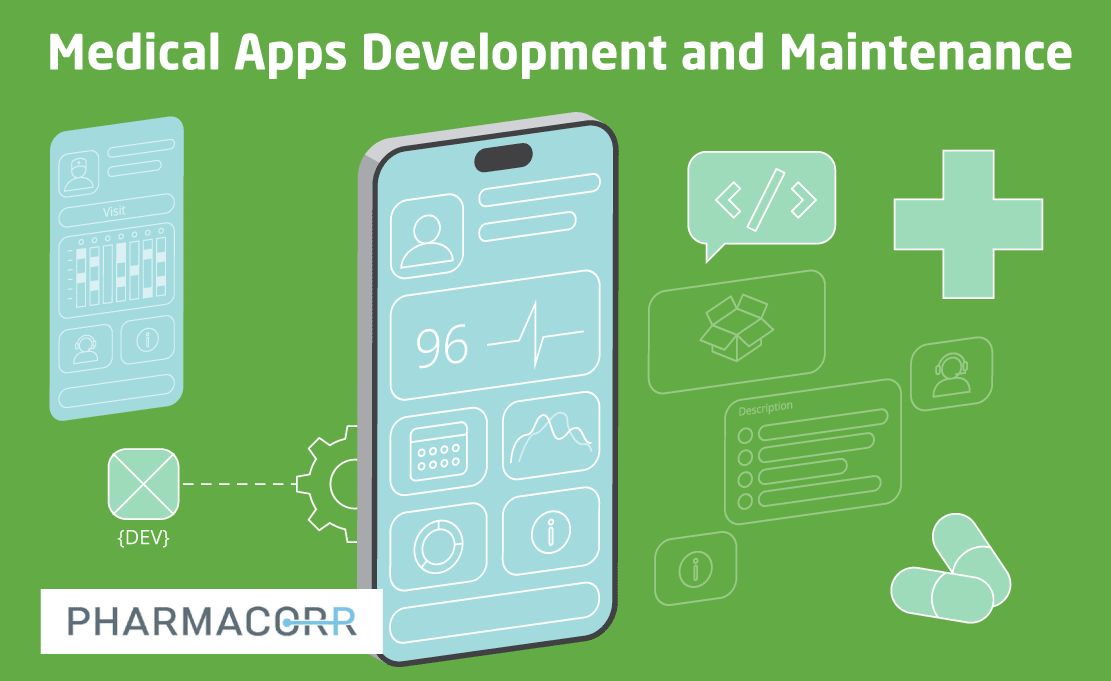The project is a set of medical apps for correctional healthcare. These applications support the processes related to the delivery of medical services to the patients in the correctional facilities – jails, prisons, and detention centers – starting from medical records management, e-prescriptions, to medication delivery, etc.
Medical Apps for Correctional Healthcare
The project is a set of medical apps for correctional healthcare. These applications support the processes related to the delivery of medical services to the patients in the correctional facilities – jails, prisons, and detention centers – starting from medical records management, e-prescriptions, to medication delivery, etc.
Business Challenge
The customer had an aim to hire full-stack software developers to support the existing apps ecosystem, to modernize legacy parts, and develop additional features. The customer selected Chudovo based on its experience in the healthcare industry, availability of the developers, and ability to maintain the medical apps 24/7.
Solution
The software development team started work on the medical project. At first, the stage of knowledge transfer and system introduction from the internal IT department took place. The full-stack .NET developers got acquainted with the code, architecture, environment, and business logic of existing applications as well as their interactions and dependencies on each other. After the completion of this stage, the developers actively took on support and development tasks.
Here is the detailed description of the applications and areas of responsibility of the Chudovo team:
System for patient’s electronic health record management
EHR solution enables management of the patient’s electronic health records. The development team worked on the following:
- Maintenance and support of the legacy EHR system written on the following tech stack: .NET Framework 4.5, ASP.NET MVC, Razor
- Consulting and reengineering of the legacy solution on the up-to-date tech stack: .NET 9 + React 18
Role-Based Access Control System
The team implemented an RBAC system for controlling user permissions/roles for managing access of the specific user group to the specific parts of the functionality of the medical applications.
Back-End App for Pharmacy Logistics and Inventory
This solution enables the planning, management, and delivery of the prescribed medications to the patients in the correctional facilities. The application monitors the status of parcels, scans shipments/receipts, and fills the database. Based on this information, separate BI reports are built. The developers’ area of responsibility was the following:
- Development of the pharmacy logistics and inventory management system with the utilization of UPS API
- Integration of the back-end app with the EHR system
Help Desk Ticketing System
The software engineering team developed the application for the user’s technical support aimed at the management, tracking, and resolution of the issues that are related to the medical services.
App for Ordering Medicines
This is a logistics application for monitoring orders automatically made from the EHR after a doctor’s prescription. This solution is available only for the internal users who control, order, and write off facility stock. The application allows for ordering medicines in bulk (for example, based on the analysis of what doctors often order). In other words, order a larger batch of medicines at the facility to ensure the availability of medicines on site and wait less for their delivery. In addition, the application provides a prediction of the expected need for a certain category of medicines for pre-order.
The developer’s main tasks:
- Maintenance and support
- Quality of life (measuring performance, health metrics, stability, operational quality, etc.)
- Bugfixing
- Development of new features
- Modernization of the legacy application parts
- Updating from Angular 10 to Angular 14
- Introduction of a new standard for QR codes
Replacing Windows AD with Microsoft Azure Entra
In the old approach, authentication was via Windows AD, and the user logged in to the local network and was then allowed into the application. Our developers have integrated Microsoft Entra ID (formerly known as Azure AD) into all medical applications for improved security and identity management. Microsoft Entra ID is a method of authentication via an MS account.
The user goes to the application’s website, then a redirect occurs, and he inserts his credentials. As part of this task, internal authentication was done in Azure, and several entities were created in Azure. App Registrations – every application that requires authentication is entered here. Two-factor authentication, OAuth 2.0, was administered on Azure.
Deployment Automation
The full-stack development team took over the deployment automation for the medical apps. Deployment automation involved 3 environments for each: 36 pipelines (for each back-end and front-end). Development takes place on Azure. After a commit, the build process is triggered, and through the network, the medical app is deployed on a specific physical computer running Windows Server, where it is automatically hosted on IIS.
Business Impact
The customer benefits from the results of hiring for his medical software in the following way:
- The software engineering team maintained and supported the set of medical apps to ensure the smooth delivery of medical services in the correctional facilities
- The developers provided consulting and legacy solutions modernization services
- Deployment automation
- Changing application authentication to Microsoft Entra ID
- Development of the additional medical applications from scratch
